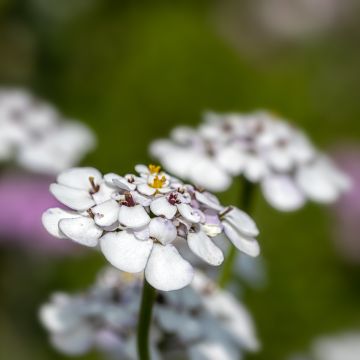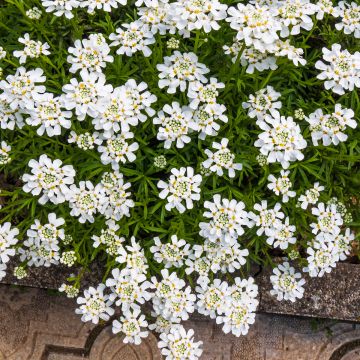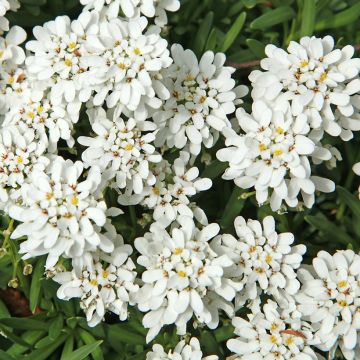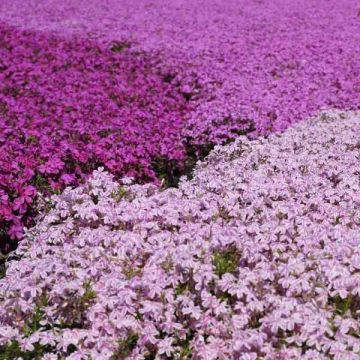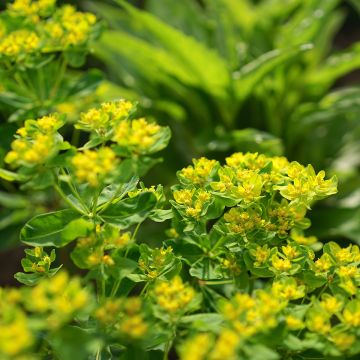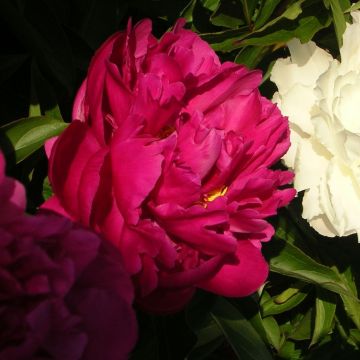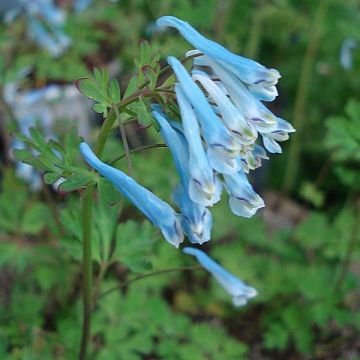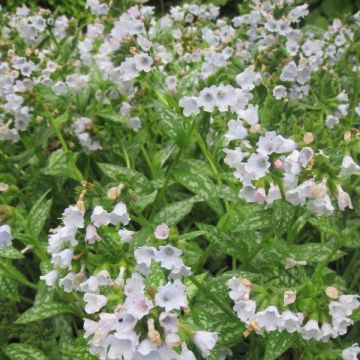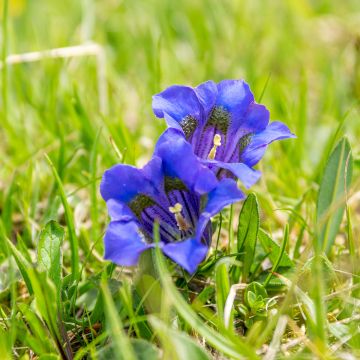

Iberis sempervirens


Iberis sempervirens


Iberis sempervirens


Iberis sempervirens


Iberis sempervirens


Iberis sempervirens


Iberis sempervirens


Iberis sempervirens


Iberis sempervirens


Iberis sempervirens
Iberis sempervirens
Iberis sempervirens
Evergreen Candytuft, Perennial Candytuft, Thalspi
I ordered 3 young plants for a semi-shaded rock garden. The plants received were small but vigorous. We'll see how they establish. I can't wait to see the result!
Liz, 18/09/2025
Special offer!
Receive a €20 voucher for any order over €90 (excluding delivery costs, credit notes, and plastic-free options)!
1- Add your favorite plants to your cart.
2- Once you have reached €90, confirm your order (you can even choose the delivery date!).
3- As soon as your order is shipped, you will receive an email containing your voucher code, valid for 3 months (90 days).
Your voucher is unique and can only be used once, for any order with a minimum value of €20, excluding delivery costs.
Can be combined with other current offers, non-divisible and non-refundable.
Home or relay delivery (depending on size and destination)
Schedule delivery date,
and select date in basket
This plant carries a 12 months recovery warranty
More information
We guarantee the quality of our plants for a full growing cycle, and will replace at our expense any plant that fails to recover under normal climatic and planting conditions.
Would this plant suit my garden?
Set up your Plantfit profile →
Description
Iberis sempervirens is a vigorous small plant with a spreading habit, ideal for adorning sunny rockeries, borders, and containers, from spring to autumn. This remarkably floriferous groundcover is adorned with multiple brilliant white flowers, covering narrow, dark green, evergreen foliage. Very drought-resistant once established, it can thrive in any type of well-drained soil, even poor and chalky soil. It prefers sun but also tolerates partial shade.
Iberis sempervirens, also known as Candytuft, is a groundcover plant of the Brassicaceae family, native to the Mediterranean region. This plant therefore tolerates heat and drought once well established. Its foliage is composed of numerous small, oblong, and narrow leaves, measuring only 2 to 3 cm (1in) in length. They are dark green and evergreen. They are carried by woody stems that form a dense tuft 25 cm (10in) tall and spread at least 40 cm (16in) wide. The cushions, present all year round, are covered with tight clusters of pure white flowers with four petals, enhanced by yellow stamens, between March and May. Depending on the soil moisture, flowering can sporadically continue until autumn. It is very easy to propagate by cuttings in spring or late summer. Iberis is also highly attractive to bees.
Very hardy, you can plant Candytuft in all regions, as long as the soil is well-drained. Heavy soil quickly causes the plant to struggle. On the other hand, rocky soil does not bother it. You can use it to accentuate pathways. In rockeries, you can associate it with Teucrium, Aubrieta, Erodium, thymes... or even with Salvia chamaedryoides in not too harsh climates. It can also be successfully grown in pots, with regular watering, in a light and perfectly drained substrate.
Report an error about the product description
Iberis sempervirens in pictures






Flowering
Foliage
Plant habit
Botanical data
Iberis
sempervirens
Brassicaceae
Evergreen Candytuft, Perennial Candytuft, Thalspi
Mediterranean
Other Iberis
View all →Planting and care
Iberis sempervirens shoud be planted in spring or autumn in the ground or in a container in a sunny position. It will also tolerate some shade.
It will tolerate and even prefer poor, even chalky, rocky, or sandy soils. If you place it in richer or slightly heavier soil, make sure to add some gravel or coarse sand during planting, as it will not appreciate waterlogged soil, especially in winter.
This plant requires little maintenance. You can simply remove faded flowers by lightly trimming it if you want to maintain a more compact shape.
Planting period
Intended location
Care
-
, onOrder confirmed
Reply from on Promesse de fleurs
Similar products
Haven't found what you were looking for?
Hardiness is the lowest winter temperature a plant can endure without suffering serious damage or even dying. However, hardiness is affected by location (a sheltered area, such as a patio), protection (winter cover) and soil type (hardiness is improved by well-drained soil).

Photo Sharing Terms & Conditions
In order to encourage gardeners to interact and share their experiences, Promesse de fleurs offers various media enabling content to be uploaded onto its Site - in particular via the ‘Photo sharing’ module.
The User agrees to refrain from:
- Posting any content that is illegal, prejudicial, insulting, racist, inciteful to hatred, revisionist, contrary to public decency, that infringes on privacy or on the privacy rights of third parties, in particular the publicity rights of persons and goods, intellectual property rights, or the right to privacy.
- Submitting content on behalf of a third party;
- Impersonate the identity of a third party and/or publish any personal information about a third party;
In general, the User undertakes to refrain from any unethical behaviour.
All Content (in particular text, comments, files, images, photos, videos, creative works, etc.), which may be subject to property or intellectual property rights, image or other private rights, shall remain the property of the User, subject to the limited rights granted by the terms of the licence granted by Promesse de fleurs as stated below. Users are at liberty to publish or not to publish such Content on the Site, notably via the ‘Photo Sharing’ facility, and accept that this Content shall be made public and freely accessible, notably on the Internet.
Users further acknowledge, undertake to have ,and guarantee that they hold all necessary rights and permissions to publish such material on the Site, in particular with regard to the legislation in force pertaining to any privacy, property, intellectual property, image, or contractual rights, or rights of any other nature. By publishing such Content on the Site, Users acknowledge accepting full liability as publishers of the Content within the meaning of the law, and grant Promesse de fleurs, free of charge, an inclusive, worldwide licence for the said Content for the entire duration of its publication, including all reproduction, representation, up/downloading, displaying, performing, transmission, and storage rights.
Users also grant permission for their name to be linked to the Content and accept that this link may not always be made available.
By engaging in posting material, Users consent to their Content becoming automatically accessible on the Internet, in particular on other sites and/or blogs and/or web pages of the Promesse de fleurs site, including in particular social pages and the Promesse de fleurs catalogue.
Users may secure the removal of entrusted content free of charge by issuing a simple request via our contact form.
The flowering period indicated on our website applies to countries and regions located in USDA zone 8 (France, the United Kingdom, Ireland, the Netherlands, etc.)
It will vary according to where you live:
- In zones 9 to 10 (Italy, Spain, Greece, etc.), flowering will occur about 2 to 4 weeks earlier.
- In zones 6 to 7 (Germany, Poland, Slovenia, and lower mountainous regions), flowering will be delayed by 2 to 3 weeks.
- In zone 5 (Central Europe, Scandinavia), blooming will be delayed by 3 to 5 weeks.
In temperate climates, pruning of spring-flowering shrubs (forsythia, spireas, etc.) should be done just after flowering.
Pruning of summer-flowering shrubs (Indian Lilac, Perovskia, etc.) can be done in winter or spring.
In cold regions as well as with frost-sensitive plants, avoid pruning too early when severe frosts may still occur.
The planting period indicated on our website applies to countries and regions located in USDA zone 8 (France, United Kingdom, Ireland, Netherlands).
It will vary according to where you live:
- In Mediterranean zones (Marseille, Madrid, Milan, etc.), autumn and winter are the best planting periods.
- In continental zones (Strasbourg, Munich, Vienna, etc.), delay planting by 2 to 3 weeks in spring and bring it forward by 2 to 4 weeks in autumn.
- In mountainous regions (the Alps, Pyrenees, Carpathians, etc.), it is best to plant in late spring (May-June) or late summer (August-September).
The harvesting period indicated on our website applies to countries and regions in USDA zone 8 (France, England, Ireland, the Netherlands).
In colder areas (Scandinavia, Poland, Austria...) fruit and vegetable harvests are likely to be delayed by 3-4 weeks.
In warmer areas (Italy, Spain, Greece, etc.), harvesting will probably take place earlier, depending on weather conditions.
The sowing periods indicated on our website apply to countries and regions within USDA Zone 8 (France, UK, Ireland, Netherlands).
In colder areas (Scandinavia, Poland, Austria...), delay any outdoor sowing by 3-4 weeks, or sow under glass.
In warmer climes (Italy, Spain, Greece, etc.), bring outdoor sowing forward by a few weeks.






























